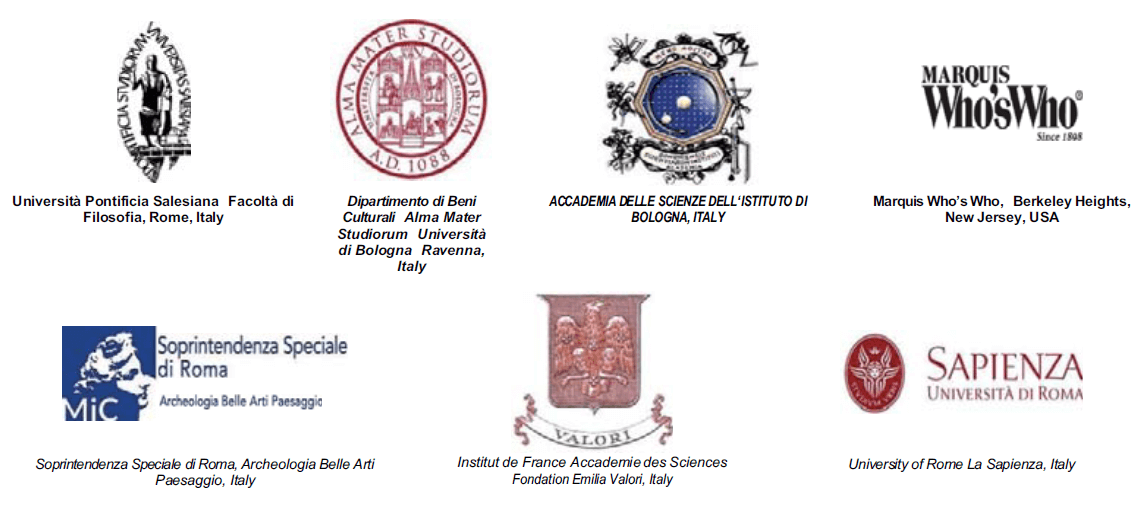Blue-Biotechnology and Biocleaning of Historic-Artistic Artifacts
DOI:
https://doi.org/10.6092/issn.1973-9494/7169Keywords:
bioactive molecules, esterase, Paraloid-B72, artwork restorationAbstract
The search for novel cleaning strategies in restoration procedures is growing fast. One innovation/innovative breakthrough in cleaning procedures is represented by the use of enzymes. This is due to the fact that their action is highly selective and they effectively remove undesired layers without adversely affecting the constituent or surrounding materials of the artifact undergoing treatment. In this study we present the results of tests performed by a new set of enzymatic proteins, esterases, extracted from marine organisms, for the bio-removal of Paraloid B72.References
Amoroso, G.G. (2002) Trattato di scienza della conservazione dei monumenti: etica della conservazione, degrado dei monumenti, interventi conservativi, consolidanti e protettivi. Alinea Editrice.
Barresi, G., Di Carlo, E., Trapani, M.R., Parisi, M.G., Chillè, C., Mulè, M.F., Cammarata, M., Palla, F. (2015) Marine organisms as source of bioactive molecules applied in restoration project. Heritage Science, 3, pp. 17-20.
Bellucci, R., Cremonesi, P., Pignagnoli, G. (1999) A note on the use of enzymes in conservation: the removal of aged acrylic resin coatings with Lipase, Studies in Conservation, 44(4), pp. 278-281.
Bosch-Roig, P., Ranalli, G. (2014) The safety of biocleaning technologies for cultural heritage. Front. Microbiol. 5, pp.1-3.
Chillè, C., Di Carlo, E., Barresi, G., Sottile, S., Lazzara, G., Cammarata, M., Palla, F. (2014) Pulitura mediante proteine enzimatiche sperimentali. In: Proceedings of XII Congresso Nazionale IGIIC – Lo Stato dell’Arte – Accademia Di Belle Arti di Brera – Milano 23/24 ottobre, pp.1-8
Laemmli, U.K. (1970) Cleavage of Structural Proteins during the Assembly of the Head of Bacteriophage T4, Nature, 227, pp. 680-685.
Martin, E. (1977) Some improvements in techniques of analysis of paint media. Studies in Conservation, 22, pp. 63-67.
Palla, F. (2013) Bioactive molecules: innovative contribution of biotechnology to the restoration of cultural heritage, Journal Conservation Science in Cultural Heritage 13, pp. 369-373.
Palla, F., Barresi, G., Giordano, A., Schiavone, S., Trapani, M.R., Rotolo, V., Parisi, M.G., Cammarata, M. (2016) Cold-active molecules for a sustainable preservation and restoration of historic-artistic manufacts. International Journal of Conservation Science, 7(1), pp. 239-246.
Palla, F., Cammarata, M., Trapani, M.R., Salamone, M., Ghersi, G., Sebastianelli, M. (2012) Novel protease from marine organisms with potential interest in the restoration procedure. In: Proceedings of International Congress on Science and Technology for the Conservation of Cultural Heritage, 2nd-5th October, Santiago de Compostela, Spain, pp. 279-282.
Palla, F., Ferrara, G., Richiusa, A., Teri, R.M.C., Sebastianelli, M. (2015) Application of new proteases in removal protein layers from artistic works surfaces. In: Proceedings of 7th ESRARC - European Symposium on Religious Art. Restoration & Conservation, Trnava 4-6 June, pp. 66-69.
Podany, J., Garland, K.M., Freeman, W.R., Rogers, J. (2001) Paraloid B-72 as a Structural Adhesive and as a Barrier within Structural Adhesive Bonds: Evaluations of Strength and Reversibility, Journal of the American Institute for Conservation, 40(1), pp. 15-33.
Ranalli, G., Alfano, G., Belli, C., Lustrato, G., Colombini, M.P., Bonaduce, I., Zanardini, E., Abbruscato, P., Cappitelli, F., Sorlini, C. (2005) Biotechnology applied to cultural heritage: biorestoration of frescoes using viable bacterial cells and enzymes. J Appl Microbiol, 98(1), pp. 73-83.
Sarmiento, A., Pérez-Alonso, M., Olivares, M., Castro, K., Martinez-Arkarazo, I., Fernández, LA., Madariaga, JM. (2011) Classification and identification of organic binding media in artworks by means of Fourier transform infrared spectroscopy and principal component analysis, Analytical and Bioanalytical Chemistry, 399 (10), pp. 3601-3611.
Segal, J., Cooper, D. (1977) The use of enzymes to release adhesives, Paper Conservator, 2, pp. 47-50.
Wendelbo, O. (1976) The Use of Proteolytic Enzymes in the Restoration of Paper and Papyrus. University Library of Bergen
Wolbers, R.C., (2000) Cleaning Painted Surfaces: Aqueous Methods. London: Archetype Publications.
Downloads
Published
How to Cite
Issue
Section
License
Copyright (c) 2016 Franco Palla
Copyrights and publishing rights of all the texts on this journal belong to the respective authors without restrictions. Authors grant the journal right of first publication.
This journal is licensed under a Creative Commons Attribution 4.0 International License (full legal code).
See also our Open Access Policy.






